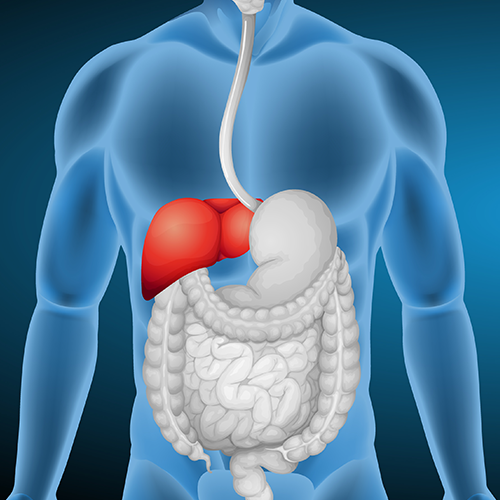What is Oral Cancer? What Causes It? What Are the Symptoms?
What is Oral Cancer? What Causes It? What Are the Symptoms?
Cancer is a disease characterized by the uncontrolled proliferation of cells in an organ or tissue. Oral cancer refers to tumors that occur in the tongue, lips, hard palate, floor of the mouth, retromolar region (wisdom tooth area), and buccal mucosa (cheek area). These cancers, although differing in specific characteristics, are generally classified as aggressive. Another term for oral cancer is oral cavity cancer.
What is Oral Cancer?
Oral cancer arises from abnormal cell growth and uncontrolled proliferation in any area of the mouth. Early detection is crucial for maintaining a high success rate in treatment. Surgical treatment is commonly used for cancers in this area, and in some cases, chemotherapy may be added. For cancers in the oral region, neck dissection might also be necessary during treatment.
Types of Oral Cancer
Oral cancers are categorized based on the type of cells where the tumor originates and grows. The most common type of oral cancer is squamous cell carcinoma, which originates from the epithelial cells lining the mouth. Less common types of oral cancers include:
- Adenocarcinoma: Arises in the salivary glands.
- Sarcoma: Develops from abnormalities in bone, muscle, cartilage, or other cells.
- Oral Melanoma: Starts in melanocytes, which produce skin pigment.
- Lymphoma: Generally develops from cells in the lymph nodes.
Oral cancers fall under the broader category of “head and neck cancers,” which also include:
- Laryngeal cancer
- Nasopharyngeal cancer
- Oropharyngeal cancer
- Hypopharyngeal cancer
- Thyroid gland cancer
- Nasal and sinus tumors
- Esophageal cancer
What Causes Oral Cancer?
Cancer results from uncontrolled cell proliferation. The exact cause of oral cancer is not known, but it is believed that mutations in healthy cells can lead to cancer. These mutations trigger the proliferation of cells, forming tumors that may spread to other areas of the body over time. Oral cancers typically involve squamous cells in the mouth and lips and are often classified as squamous cell carcinomas.
Risk Factors for Oral Cancer
The risk of oral cancer is significantly higher in individuals who use tobacco products for extended periods. Most people with oral cancer have a history of tobacco use, and the risk increases proportionally with the amount and duration of tobacco use. Other risk factors include excessive alcohol consumption, excessive sun exposure, being over 40 years old, and a tendency towards obesity. Individuals with a history of head and neck cancer who continue to use alcohol and tobacco also face increased risk. Additional risk factors include:
- HPV infection
- Ultraviolet (UV) radiation
- Poor nutrition
- Weak immune system
- Health issues like graft-versus-host disease or Fanconi anemia
- Poor oral hygiene
Individuals with oral cancer also face a higher risk of developing laryngeal, esophageal, or lung cancer.
Oral Cancer and HPV
Human papillomavirus (HPV) is a virus that many people encounter as an infection at some point in their lives. It affects skin and mucous membranes in various parts of the body, including the mouth and throat, anus, cervix, vagina, and vulva.
While many HPV types are associated with non-cancerous lesions, some are linked to cancer. Most infections are asymptomatic and may remain inactive for extended periods. In some cases, individuals may be unaware of the infection. Consequently, the risk of developing cancer remains low.
Currently, there is no practical routine blood test for HPV, but biopsies can be used for diagnosis in suspicious cases.
Symptoms of Oral Cancer
As with all cancers, early detection significantly improves treatment success rates. It is essential to consult a doctor if symptoms persist for an extended period. Symptoms of oral cancer include:
- Non-healing sores on the mouth or lips
- Lumps or swelling in the mouth
- White or red patches in the mouth
- Discolored areas in the mouth that do not change
- Thickening or lump formation in the cheeks
- Persistent sore throat
- Hoarseness
- Bad breath
- Difficulty chewing or swallowing
- Difficulty moving the jaw or tongue
- Numbness in the tongue or any part of the mouth
- Pain around the teeth and jaw
- Unexplained weight loss
- Persistent feeling of something stuck in the throat
Diagnosis of Oral Cancer
The diagnosis of cancer begins with a physical examination. In the absence of symptoms, routine dental check-ups can sometimes detect abnormal tissue changes in the mouth. At this point, any lumps or masses may be felt. Diagnosis can be confirmed through direct intervention on the lesion or biopsy of the suspicious area. After diagnosis, the doctor may request several tests to assess the extent and aggressiveness of the oral cancer. These tests help determine the size, spread, and other characteristics of the cancer, guiding the treatment plan.
Tests might include:
- MRI scan of the head and neck
- Chest CT scan to search for cancer in the lymph nodes
- PET scan to check for cancer in other areas of the body
- The doctor may use a tube with a small camera to examine the throat, esophagus, and lungs.
It’s important to note that head and neck cancers often occur in multiple sites simultaneously or within a short time frame, which should be considered during examination. Similarly, individuals with squamous cell carcinoma of the esophagus or stomach should be evaluated for other head and neck cancers.
Which Doctor/Specialty to Consult for Oral Cancer?
If oral cancer is suspected, a visit to an Ear, Nose, and Throat (ENT) specialist may be necessary for a physical examination of other potential cancer sites in the head and neck and, if needed, biopsy of the suspicious area. However, before starting treatment, it is essential to consult with a Radiation Oncologist. Radiation therapy may be a better option than aggressive surgery that could impact the patient’s quality of life or appearance. For suspected or diagnosed oral cancer, consulting our clinic will ensure the best and most accurate treatment.
Note: For more detailed information about oral cancer treatment, you can fill out the form below. We will contact you as soon as possible.
[forminator_form id=”2968″]
Stages of Oral Cancer
The staging system provides detailed information about cancer. It helps determine the extent of cancer spread and its aggressiveness.
Oral cancer staging has four stages:
- Stage I: The tumor is smaller than 2 centimeters and has not spread to lymph nodes.
- Stage II: The cancer is larger but remains localized.
- Stage III: The tumor has grown and may have spread to the lymph nodes.
- Stage IV: The cancer has spread to other parts of the body.
The stage of cancer is important for determining the treatment approach. Recent advancements mean that staging is now more critical for determining treatment rather than just predicting the disease’s progression.
Does Oral Cancer Kill?
Early-detected oral cancer can be effectively treated with surgery or radiation therapy. However, if discovered at a later stage, treatment may become more complex, involving surgery, radiation therapy, or chemotherapy, which can impact the patient’s quality of life during and after treatment. Therefore, it is crucial to consult a doctor as soon as any persistent symptoms, such as a non-healing sore in the mouth, occur.
How is Oral Cancer Treated?
Treatment varies based on the individual’s overall health, the tumor’s location, and the stage of cancer. Primary treatment methods include surgery and radiation therapy. Recent advancements in technology have made radiation therapy more prominent due to its impact on quality of life. Surgery is preferred if the tumor can be removed with a small excision. Robotic surgery methods are also available for oral cancer, but surgeries that affect cosmetic appearance or function should be avoided if possible; in such cases, radiation therapy is a better option. Early-stage, localized cancers can be treated with surgery or radiation therapy alone. Advanced cancers may require a combination of radiation therapy and chemotherapy to enhance effectiveness and prevent spread. Radiation therapy is generally administered in fractions over 6-7 weeks and can cause temporary side effects like skin redness, swallowing difficulties, or mucositis. These side effects are largely temporary. Radiation and surgery for head and neck cancers should be performed by experienced practitioners.
Post-treatment rehabilitation is also crucial, as oral cancers affect many essential functions and have significant cosmetic implications. The post-treatment period should be managed by an experienced team.
Radiation Therapy in Oral Cancer Treatment
Maintaining quality of life and cosmetic appearance is important in oral cancer treatment. For tumors located in accessible areas, surgery might be the first option, but if it affects quality of life, radiation therapy should be considered. For advanced tumors involving bone, radiation therapy is used post-surgery. For tumors with metastasis or spread to lymph nodes, chemotherapy is added to radiation therapy.
Side Effects of Radiation Therapy
The first side effects of radiation therapy are observed on the skin due to the radiation passing through it, which can cause various levels of dermatitis, from mild redness to necrosis. Oral mucositis can cause pain and difficulty eating, and a prescribed mouthwash should be used. Radiation of the neck’s lymphatic chain can lead to swallowing difficulties.
Oral and dental health and hygiene are crucial during and after radiation therapy. It is advisable to see a dentist before starting radiation therapy if dental issues need addressing, as we prefer to avoid extractions during and after treatment.
Ways to Prevent Oral Cancer
Good oral and dental health is essential. Chronic irritants in the mouth or throat must be removed. Avoiding tobacco, alcohol, and marijuana is also crucial, as these are significant risk factors for oral cancer.
Note: For more information, you can also review our article titled “What is Lip Cancer? What Are the Symptoms of Lip Cancer?








